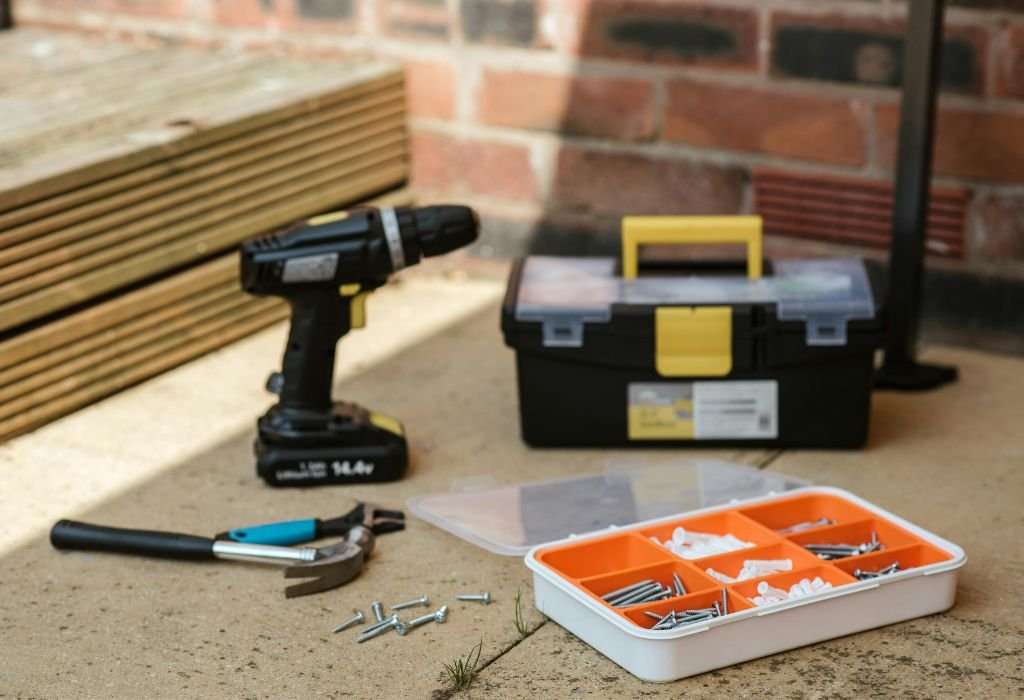Many people buy a cordless drill only to discover it cannot handle the simplest tasks.
This frustration usually comes from misunderstanding torque and how it affects drilling performance.
Torque is the twisting force that turns a bit, yet it is often confused with speed or power.
When used correctly, torque prevents screws from stripping, wood from splitting, and drills from stalling.
A Ronix Tools study shows that many manufacturers exaggerate torque ratings, misleading buyers.
According to DeWalt, modern drills measure real performance with Units Watts Out (UWO) instead of static torque numbers.
Understanding what is torque in cordless drills means making smarter choices and avoiding wasted effort.
The right torque settings also save battery power, extend tool life, and improve safety on every project.
DIY enthusiasts and professionals alike benefit from knowing when to adjust torque and when to increase speed.
This guide explores the meaning of torque, its measurement, why it matters, and how new technology in 2025 is changing cordless drills.
What Is Torque in Cordless Drills?

Torque is the twisting force that makes a drill bit rotate. It is expressed in Newton Metres (Nm) or inch-pounds (in-lbs).
Unlike speed, which measures rotations per minute (RPM), torque reflects the power behind each turn. A high-torque drill can drive screws into tough materials with less effort.
Most modern cordless drills advertise both torque and RPM. Understanding the balance between them is essential for matching the tool to the task.
In everyday projects, torque determines whether a drill can finish a job without stalling or stripping fasteners. It is the foundation of drill performance.
What is torque in cordless drills?
Torque is the rotational force a drill applies to a bit, measured in Nm or in-lbs.
Does torque mean speed?
No, torque is force, while speed is rotations per minute.
Why is torque measured in Nm or in-lbs?
These are the standard units for expressing rotational force.
What is a good torque range for home drills?
15–35 Nm is ideal for most DIY tasks.
Is higher torque always better?
No, without control it can damage materials or fasteners.
Why Torque Matters: Control, Precision, and Avoiding Damage
Torque is not just about strength; it is about control. A drill with adjustable torque settings allows precision in delicate tasks.
Variable clutch settings prevent screws from overdriving. They also reduce the risk of splitting wood or stripping heads.
Too much torque can ruin a project by damaging both fasteners and materials. Too little torque can make the drill stall or fail to complete the job.
A well-chosen torque setting ensures accuracy, saves materials, and makes the drill more efficient. It transforms an average tool into a reliable performer.
What are torque settings for?
They regulate force and prevent overdriving screws.
What happens if torque is too high?
Materials may split, and screws can strip.
What if torque is too low?
The drill may stall before completing the task.
How does speed affect torque usage?
Lower speeds provide higher torque for demanding tasks.
Can torque improve safety?
Yes, controlled torque reduces accidents and tool strain.
How Torque Is Measured and Rated
Early torque tests were conducted with locked spindles. This gave maximum static numbers but did not reflect real usage.
Today, brands like DeWalt use Units Watts Out (UWO). This rating combines torque and speed under working conditions.
UWO gives a more realistic picture of a drill’s power. It helps buyers compare performance beyond inflated torque claims.
Still, many manufacturers list only maximum torque. This makes it important to understand both static torque and UWO ratings.
How is torque rating traditionally measured?
By locking the spindle and measuring static force.
What is power rating (UWO)?
It is torque × speed under actual working load.
Which is more useful to compare?
UWO offers a better real-world comparison.
Do brands exaggerate torque numbers?
Yes, many list theoretical values instead of practical ones.
Is there a universal test?
No, ratings vary across manufacturers.
Torque and Gearing: Speed–Torque Trade-Offs

Cordless drills often feature two or more gear settings. Low gear delivers higher torque at slower speeds.
High gear prioritizes fast drilling with reduced torque. This trade-off allows flexibility for different materials and tasks.
Brushless motors improve this balance by delivering torque more efficiently. They reduce heat, extend battery life, and provide smoother performance.
Selecting the right gear ensures torque is applied correctly. Matching speed and torque to the job avoids unnecessary strain on the tool.
What does low gear do?
It provides more torque for tougher materials.
What does high gear do?
It increases speed but lowers torque output.
How do brushless motors help?
They maintain torque with greater efficiency.
Is RPM alone enough to judge performance?
No, torque under load matters more than no-load RPM.
Do more gears improve performance?
Yes, they give finer control over torque and speed.
Hard Torque vs Soft Torque
Hard torque refers to resistance in rigid materials like metal. Soft torque applies to yielding materials like wood or drywall.
Manufacturers sometimes list both values on specifications. This helps buyers understand performance in different environments.
Hard torque usually represents maximum capability. Soft torque is often closer to real-world everyday use.
Understanding the difference allows better material matching. It prevents overloading the tool or damaging surfaces.
What is hard torque?
It is the torque achieved against unyielding resistance.
What is soft torque?
It applies to materials that compress or give way.
Does soft material need less torque?
Yes, yielding surfaces require lower torque.
Should settings change with material?
Yes, harder surfaces need higher torque.
Why do brands list both values?
To show realistic and maximum performance differences.
Impact Driver vs Drill: Torque Differences
An impact driver delivers torque in rapid bursts. A cordless drill applies continuous torque for precision.
Impact drivers excel at long screws and heavy fasteners. Drills are better suited for holes and lighter tasks.
Drills provide versatility across materials. Impact drivers specialize in raw torque delivery.
Owning both tools gives flexibility for different projects. Together, they cover speed, power, and precision.
Can a drill match a driver’s torque?
No, impact drivers produce much higher torque spikes.
Why use a drill instead of a driver?
Drills are more versatile and precise.
Is wrist strain a concern?
Impact drivers reduce strain compared to drills at high torque.
Do drivers always outperform drills?
Not in precision work—drills are more controlled.
Should DIYers own both tools?
Yes, they complement each other.
Choosing the Right Torque Drill in 2025

The best drill depends on the type of projects. Light users need moderate torque, while professionals require higher ranges.
Adjustable clutch settings give more control for different jobs. More settings mean better customization.
Brushless drills now dominate the market. They offer stronger torque output and longer lifespans.
Battery voltage also influences torque delivery. Higher voltages maintain torque better under load.
What torque do DIYers need?
15–30 Nm suits most home projects.
Should clutch settings be adjustable?
Yes, they give precise torque control.
Is brushless worth it?
Yes, it improves torque efficiency and durability.
Does voltage affect torque?
Yes, higher voltage supports higher torque output.
What features matter most?
Torque range, brushless motor, and clutch settings.
Future Trends: AI, Smart Torque, and Enhanced Power
Smart torque systems are being introduced. These automatically adjust force depending on material resistance.
Artificial intelligence may optimize torque settings. This will reduce errors and improve productivity.
Manufacturers are experimenting with torque sensors. These detect screw depth and material type in real time.
Next-generation drills may rely less on manual settings. Instead, they will offer predictive torque adjustment.
Are smart torque drills available now?
Yes, some brands offer auto-adjusting torque.
Will AI manage torque in the future?
Yes, it is expected to regulate settings automatically.
Is power rating evolving?
Yes, telemetry may replace static torque specs.
Will smart torque reduce mistakes?
Yes, it prevents overdriving and material damage.
Should buyers wait for new models?
Not required, but advanced drills will offer precision.
Conclusion
Torque is the defining feature of cordless drill performance. It balances speed, control, and efficiency.
Understanding what is torque in cordless drills helps buyers choose wisely. It also improves results and reduces costly errors.
Future drills will include smart torque features. Yet the fundamentals of torque, clutch, and speed remain essential.
Final advice: Match torque to your task, use clutch settings correctly, and let your drill’s power work with precision.

I’m John F. Nicholas, the founder, lead writer, and drill enthusiast behind 101drill.com. With years of hands-on experience in power tools and DIY projects, I created this platform to share practical knowledge, expert tips, and real-world insights to help others master the art of drilling.
